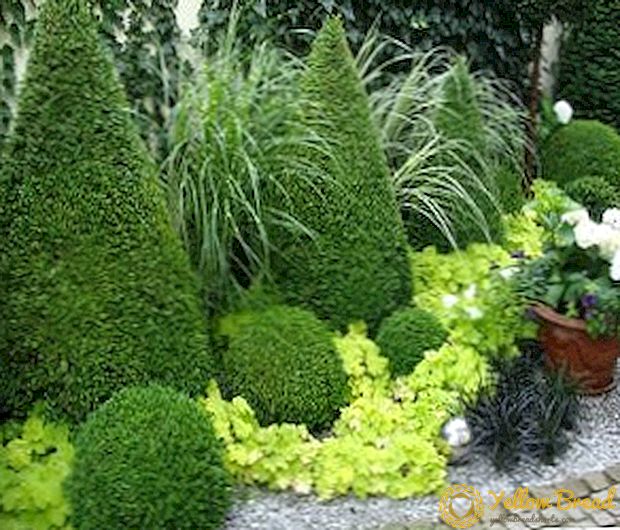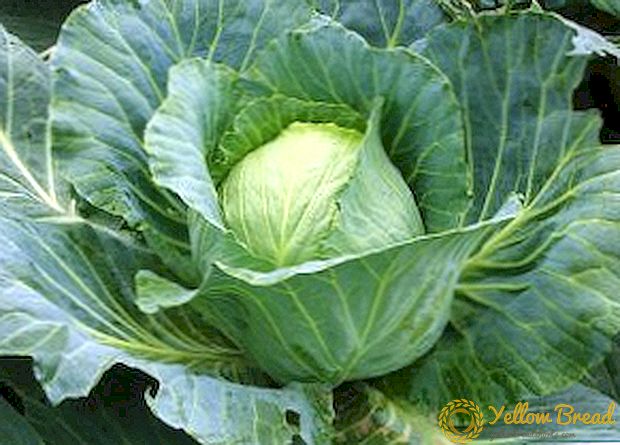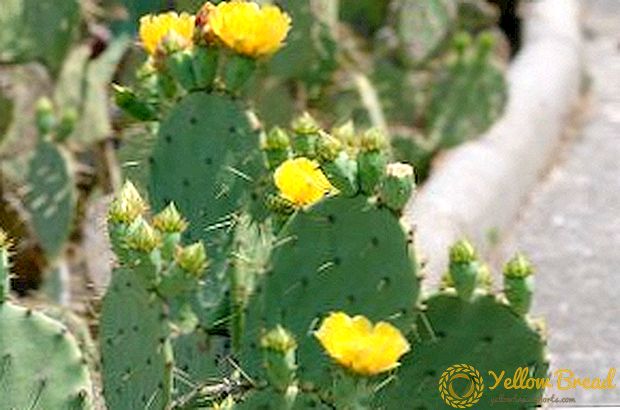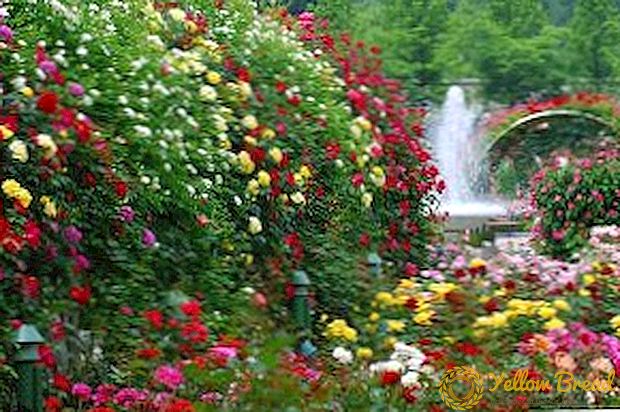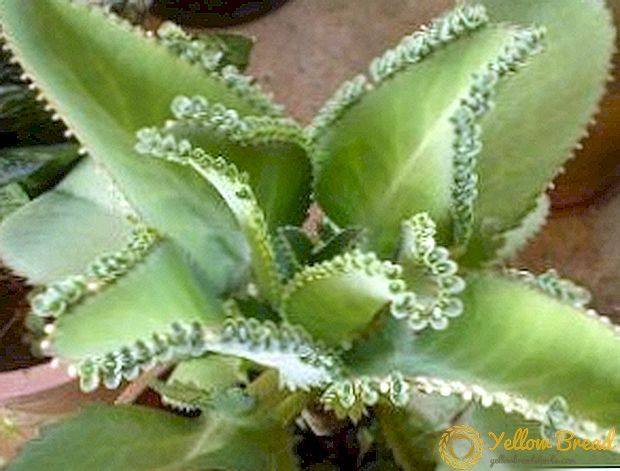 Getting out to nature, you need to be very careful, since we can be surrounded by poisonous plants.
Getting out to nature, you need to be very careful, since we can be surrounded by poisonous plants.
From our article you can find out the name and description of the most common poisonous plants.
- Daphne
- Castor bean
- Hogweed
- Delphinium
- Buttercup
- Lily of the valley
- Black helen
- Celandine
- Quarantus pink
Daphne
The wolfberry is represented by a low-branchy deciduous shrub, about 1.5 meters high. It has a superficial root system. Identify the bush can be on a yellowish-gray, slightly wrinkled bark. Flowering begins in early spring.  The wolfberry has narrow, long leaves, painted in a dark green color. Their length is up to 8 cm, and the width is up to 2 cm. The flowers of the plant are arranged in a "bouquet", 3-5 pieces are collected.
The wolfberry has narrow, long leaves, painted in a dark green color. Their length is up to 8 cm, and the width is up to 2 cm. The flowers of the plant are arranged in a "bouquet", 3-5 pieces are collected.
Due to the fact that the flower is poisonous, it is rarely used for decorative purposes. Isolation of sharply burning poisonous juice from fruits makes it impossible to use shrubs in medicine.
You can get poisoned by eating berries or chewing bark. If wet bark or juice of the berries gets on the skin, it will cause the development of severe dermatitis. Inhalation of dust from the bark of the wolfberry irritates the mucous membrane of the respiratory tract, and when it gets into the eyes, conjunctivitis develops.
After eating the berries, you can feel a burning sensation in the mouth, nausea and vomiting may begin, the victim will feel weak. Seizures may also occur. 
Castor bean
The plant is represented by shrubs, whose height can reach 2 meters. They have wide, well-branched stems. The foliage is quite large, green in color, has from 5 to 10 blades.
Flowers have a nondescript look. The fruits are similar to the oval-spherical box, on top of which there are thorns, the diameter is 3 cm.
Ricin is in the seed coat and is the most poisonous substance in the shrub. The use of seeds can lead to poisoning, which in most cases end in death.  Ricinin is found in all other parts of the shrub - foliage, seeds, and oilcake. The critical dose is: for an adult - 20 seeds, for a child - 6 seeds.
Ricinin is found in all other parts of the shrub - foliage, seeds, and oilcake. The critical dose is: for an adult - 20 seeds, for a child - 6 seeds.
The insidiousness of this plant is that the signs of poisoning are not immediately noticeable. Must pass at least a day to begin to show symptoms.
Poisoning is accompanied by strong tingling in the abdomen, bloody diarrhea, fever, weakness.
Ricin provokes adhesion of erythrocytes, which leads to a violation of capillary circulation, blood clots are formed, and cerebral hemorrhage can occur. 
Hogweed
Hogweed belongs to biennial plants, has stems of different heights - from 20 to 250 cm. It has large long-leaf leaves, small white flowers that are collected in umbrellas with a diameter of 40 cm.
Flowering occurs in June, in some species may continue until August.
During the growing season, its leaves, stems and fruits accumulate photodynamic active furocoumarins capable of affecting the skin. They are particularly dangerous on sunny days - it is during this period that the sap of the plant, falling on the skin, leads to the appearance of dermatitis, similar to burns.  Blisters may appear on the affected area, which eventually turn into dark spots. Completely they disappear only after 3-6 months. In case of contact with a previously affected area of sunlight, a relapse may occur.
Blisters may appear on the affected area, which eventually turn into dark spots. Completely they disappear only after 3-6 months. In case of contact with a previously affected area of sunlight, a relapse may occur.
When it comes into the eyes, the juice of hogweed provokes blindness. If as a result of the impact of juice on the skin, 80% of the body surface is affected, it is fatal.
Delphinium
Quite often, poisonous flowers are disguised as beautiful and harmless. That is exactly what a delphinium is. It belongs to perennial herbaceous plants, possesses hollow stalks.
 Many years ago, the flower was used to combat insect insects, but then they began to actively explore the poison, which is contained in its foliage and roots. As it turned out, the delphiniums contain alkaloids with action similar to the famous South American curare poison.
Many years ago, the flower was used to combat insect insects, but then they began to actively explore the poison, which is contained in its foliage and roots. As it turned out, the delphiniums contain alkaloids with action similar to the famous South American curare poison.It became clear that it is better not to touch these colors. In addition, some of these alkaloids are identical to the alkaloids of aconite.
Delphinium juice contains elatin, methyl glycaconitin, kondelphine and eldenin. Once in the human body, it causes respiratory paralysis, leading to heart damage and death.
Buttercup
The habitat of the flower are wet, wetlands, shores of reservoirs. Presented by an annual or biennial plant with a hollow branched stem 20-45 cm in height.  It has fleshy shiny foliage, small light yellow flowers, the diameter of which is 7-10 mm.Flowering begins at the end of May and lasts all summer.
It has fleshy shiny foliage, small light yellow flowers, the diameter of which is 7-10 mm.Flowering begins at the end of May and lasts all summer.
The poisonous substance contained in the plant is protoanemonin, a volatile toxin with a pungent smell and burning taste. Poisoning them can occur if the plant is incorrectly used as a remedy. It is only available in fresh plants, because it disappears during drying.  The penetration of the toxin into the body leads to inflammation of the mucous membranes of the gastrointestinal tract. Inhalation of the toxin causes lacrimation, begins to cut in the eyes, there are spasms in the throat, cough and runny nose.
The penetration of the toxin into the body leads to inflammation of the mucous membranes of the gastrointestinal tract. Inhalation of the toxin causes lacrimation, begins to cut in the eyes, there are spasms in the throat, cough and runny nose.
Lily of the valley
Lilies of the valley are herbaceous perennial plants whose habitats are forest zones, pine forests, glades, river channels.
Flowering occurs in May and June. Lily of the valley berries are highly toxic, and both fresh flower and dried are poisonous.
Lily of the valley is actively used in medicine, but a violation of the dosage and method of its use can lead to poisoning. 
In case of poisoning:
- drowsiness occurs;
- disrupted heart rhythm;
- hallucinations occur;
- weakness begins.
Black helen
A distinctive feature of this plant is the presence of an unpleasant smell. The flower has an erect, branched stem, on top of which there are glandular hairs. It can reach up to 140 cm in height.
The leaves are oblong, on top have a dark green color, lighter below.The flowers are quite large, with a halo of grayish color. On it you can see several purple streaks. Flowering occurs in the period July - August. Most often found on the roadsides.  Belen is completely poisonous, it contains substances such as atropine and scopolamine, capable of blocking the parasympathetic nerves. You can get poisoned by eating young sprouts or seeds.
Belen is completely poisonous, it contains substances such as atropine and scopolamine, capable of blocking the parasympathetic nerves. You can get poisoned by eating young sprouts or seeds.
Symptoms of poisoning appear after about 10-15 minutes and are characterized by dry mouth, it becomes hard to swallow and talk, pupils dilate, hallucinations and tachycardia occur.
In the case of severe poisoning, body temperature rises, blood pressure decreases and death from respiratory tract paralysis or vascular insufficiency can occur.
Celandine
Celandine belongs to the family of poppy, has a branched root, inside is colored yellow, and outside - brownish-red. It is distinguished by a hollow, erect branched stem, the height of which is up to 100 cm. The leaves are colored green, reach a length of 20 cm, and are up to 9 cm wide.  The flowers are characterized by yellow color, located on high stalks.Flowering celandine begins in May and ends in August. Fruit ripening occurs in July-September.
The flowers are characterized by yellow color, located on high stalks.Flowering celandine begins in May and ends in August. Fruit ripening occurs in July-September.
Like many poisonous shrubs, celandine for medicinal purposes should be used very carefully. You must adhere to the dosage and be sure to consult a doctor.
The first symptoms of poisoning are: nausea, a sharp decrease in pressure, the occurrence of seizures, slow pulse. Severe poisoning can be fatal.
Quarantus pink
Plant height is up to 60 cm, it has upright or creeping stems. The foliage is colored dark green, oval in shape, with feathery venation. The length of the leaves is 8 cm, width - 3.5 cm.  The flowers may have different shades - white, light pink, dark pink. Their size is about 3 cm in diameter.
The flowers may have different shades - white, light pink, dark pink. Their size is about 3 cm in diameter.
Toxic substances are found throughout the plant. Once in the human body, they cause poisoning, accompanied by cramps, colic, bloody diarrhea, and respiratory failure.In some cases, exposure to poison can lead to death.
We are surrounded by a huge number of plants, and it is very important to be able to distinguish poisonous. It is necessary to be extremely careful when using them as medicines, since the slightest deviation from the dosage can cause a fatal outcome.

